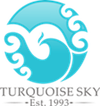How to Identify Fake Turquoises
How to Identify Fake Turquoises
By Fan Wang
The fake turquoises, or the "green stones" have name with "something turquoise", are everywhere these days. You find dealers sell fake turquoise on Ebay, even in some notable local malls. We has put together a comprehensive article by providing images of fake turquoise and the common techniques to identify the real turquoise, our goal is to help you the obvious fake turquoise trick on the market.
The four pictures below are fake turquoise jewelries. They do look pretty, right? But I tell you they are can't be natural turquoise. If you pay attention to the color and the usual matrix you will find something very fishy.
Natural Turquoise vs Fake Turquoise
1. Color
2. Matrix
3. Formation
Why? First, lets dig into a little bit under the surface of how turquoise is formed. First, turquoise is a kind of mineral that only found near deposit of copper, it also requires presence of three other materials: aluminum, phosphorus, and water. The color and the turquoise hardness depend greatly on these deposits it formed on. Turquoise color varies from green to blue, the Mohs hardness range from 4.5 to 6, if you pay closer look of the color, I bet there will not any turquoise in the world has such a unique distribution of color, or that will be the most rare collection. Some turquoise has its signature with the mine, for example, Sleeping Beauty turquoise is sky blue with white flecks or spots of whitish material appearance, and Bisbee turquoise has signature of brown metal like spot on the surface while manufactured imitations will appear radically different in both color and texture.
Now, why there is often dark matrix on turquoise? Because matrix is essentially the remains of the rocks that hosted the turquoise as it formed though weathering and oxidation process over millions of years. Same as color, matrix is something can't be manufactured. Depend on the deposit turquoise is formed, the matrix can be black, yellow and brown. Also spider webbing is commonly seen. These signatures are hard to reproduce in the factory, and other materials trying to imitate turquoise will be easily noticed.
These are all fake turquoise:

One should know which is stabilized, which is natural. In current turquoise market, most turquoise are stabilized before they are used in jewelery. Most fake turquoise can be identified easily by observing its color, matrix, and more importantly, the price of the products. Professional identification services can be obtained by sending turquoise specimen to professional lab.
Fake turquoise pictures from the-vug.com:

Many turquoise are fakes made of powered turquoise and epoxy around a base of rock, when others are made of a composite of powdered turquoise and glue! There are some unscrupulous local dealers from China will make composite masses of these materials and pass it off as legitimate. Lack of enough turquoise knowledge, a lot people are happy to buy those cheap turquoise and think they have got a good deal.
Another most common method to make fake turquoise is with dyed howlite, and magnesite. Howlite is also called "buffalo turquoise" and when placed into a bucket with some blue or green dye very nice "turquoise" can be produced. One of the methods to test the fake turquoise if the chunk of the turquoise is a chunk of plastic or dyed by using a heated needle, to see the surface of the turquoise melts or not. The heated needle is able to penetrate some epoxy resin.
We suggest buying turquoise from reputable sources, especially these who are experts dealing with turquoise. Before you buy your interested piece of jeweleries, make sure you know which mine the turquoise comes from and who the artists are. Ask them, do they has other related turquoise products, how long have them dealing with turquoise, etc. We hope you all find your ideal piece turquoise!
TurquoseSky.com natural turquoise collections:

More of our collection:

References:
1. Beware - those large chinese turquoise rocks are FAKE!! -- eBay review and guides by norzilla.
2. Natural, Stabilized, Treated, Fake and Synthetic Turquoise-- by Lee Anderson
3. Different types of fake turquoises -- from Pippinbass.com
4. Fakes, Forgeries, and Misrepresentations -- from the-vug.com

